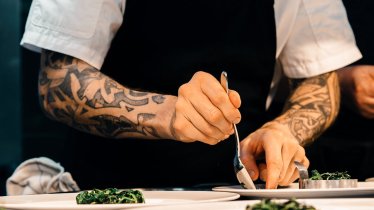
My First Real Michelin Star Restaurant Start
I worked for free in a Michelin kitchen for weeks, and one trembling plate of langoustine royale finally earned me a nod from the chef.
I showed up at a Michelin two‑star restaurant for weeks, getting turned away until they finally let me work for free, just doing the grunt work no one wanted. After proving I wouldn’t quit, I got my first real shot on the line, hands shaking the whole time. That tiny nod from the chef taught me the grind and persistence matter just as much as talent in kitchens like this.
START:
I still remember the first time I stood outside the restaurant. It was a narrow street in Paris—so quiet you could hear the faint clinking of glasses inside. Above the door, in discreet gold lettering, was the name of a place I had read about for years. A Michelin two-starred sanctuary. I wasn’t there for dinner. I was there for a chance to work.
I had already been cooking for almost a decade—sweating in cramped kitchens, making rustic food for people who barely looked up from their phones. I’d studied every cookbook I could find, memorized the plating styles of chefs I admired, and saved up just to come to France. Still, when I finally knocked on that door, I was told, “We’re not hiring.”
It was like that everywhere I went. Some chefs didn’t even glance at my résumé. Others told me bluntly that my background wasn’t prestigious enough. I wasn’t from the “right” culinary school. I hadn’t staged under anyone famous. In their eyes, I was just another ambitious cook with dreams too big for my station.
But I refused to leave. I came back, again and again. I offered to stage for free. I stood in the alley behind the restaurant at 6 a.m. just to help unload produce, hoping someone would notice. Days turned into weeks. The staff started recognizing me—not as a nuisance, but as someone stubborn enough to keep showing up.
Finally, one morning, the sous-chef handed me an apron. “We’re short today. Don’t get in the way,” he said. That was it. No warm welcome. No real opportunity. Just a chance to peel carrots and wash lettuces for twelve hours straight. But I treated it like a door had cracked open, and I wasn’t going to let it shut.
The first months were brutal. I burned myself more than I care to admit. My hands cramped from endless knife work. I stayed hours after service cleaning every inch of the kitchen just to prove I was serious. Nobody praised me. Nobody even spoke much. But slowly, silently, they began to trust me.
And then came the night I’ll never forget. The chef de partie on garde-manger called in sick. The chef looked at me—really looked at me—for the first time.
“Can you handle it?”
My voice cracked when I said yes. That service felt like stepping onto a tightrope with no safety net. The first dish I plated was their iconic langoustine royale—a poached langoustine tail, delicately brushed with beurre noisette, resting on a silken celery root purée, topped with translucent shards of pickled kohlrabi and a whisper of lemon verbena oil. I had watched it a hundred times but never imagined I’d be the one assembling it. My hands shook as I placed each element, terrified I’d ruin the precision this kitchen demanded.
When the plate left the pass, the chef didn’t say a word. He just glanced at it, then at me, and gave the slightest nod. By the end of the night, I had plated dozens more—tiny bites of perfection sent out to guests who would never know a trembling newcomer had touched their food.
Months later, I was offered a permanent position. Standing in that kitchen—the same one that had turned me away—felt surreal. It wasn’t a triumph you see in movies, with confetti and applause. It was quiet, humbling, and full of exhaustion. But it was real.
Getting into a Michelin-starred restaurant wasn’t just about skill. It was about resilience. About enduring rejection, swallowing your pride, and proving you belonged—one langoustine royale at a time.